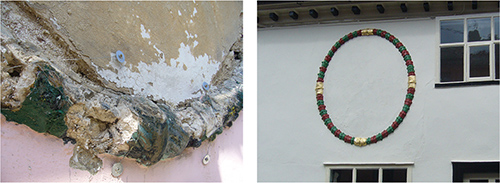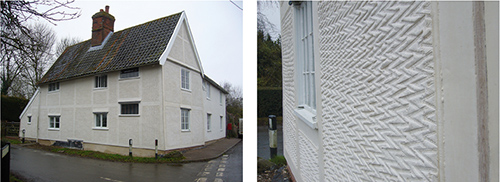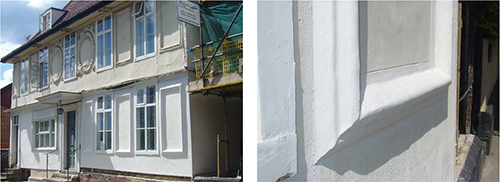Preserving traditional buildings: it’s a matter of application
At Suffolk-based Rickards Period Plastering Ltd they feel fortunate to have the opportunity to be working in an area of the country that has a wealth of unique architectural design, using what they feel is a special product: the chalky lime plaster and render. Here, Mike Rickards shares his enthusiasm for traditional plasters.
Coupled with that we have had the delight to work with several clients over the past couple of years who have had an enthusiasm for the material and the property they own – together with the foresight to tackle repairs to their properties in a way that allows the preservation of features that would otherwise be lost under inappropriate cement renders. They addressed issues overlooked by others and grasped the feel of the properties to bring back to life hidden gems.

The product has a flexibility and softness that lends itself to the fashion and statement that is ‘pargeting’.
A decorative means and statement added to a plain elevation, it can truly add interest. I would argue that, over the centuries, it has been used to enrich a property’s façade and also in some instances add a quirky oddity.
As a plasterer I would admit that looking at a flat wall while you are working can be somewhat boring; but add some detail, let the world be your oyster and enrich the appearance…well, that’s a whole new ball game.

Use of lime/chalk plasters lends itself perfectly to that process, as they are possibly the truest available material to match those used in previous centuries. They are also lightweight, supremely flexibly and, importantly – though a heavily overused word – ‘breathable’. That is a vastly important facet when thinking of timber-frame stock.
Chalk plasters offer the ‘softness’ of appearance that we have lost in previous generations, by using impervious and brittle cement-based products that have also added to the damage of the housing stock that we are now repairing.
Use of chalk plasters allows the repair, consolidation and stabilisation of fabric previously lost through poor repair using inappropriate materials, whether through acting with best intentions or an unsympathetic approach.


The design of lime/chalk plasters offer an immeasurable appeal and the ability to protect and retain potentially lost works. The recent projects pictured demonstrate the material’s flexibility – from subtle notes of gentile design to bold design and enrichment of an elevation. They are a reflection of times gone by – the consolidation and replication of previous design, its support and repair complementing the feel of generations before ours.
